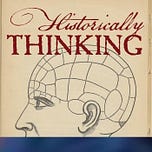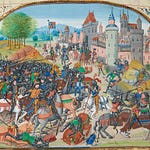Originally published on June 25, 2025 (Episode 411)
Introduction
In September 1945, the name “Kim Il-Sung” didn’t mean much—not even to the Soviet authorities determining who would rule the half-nation they were carving out in northern Korea.
He wasn’t on their list of recommended leaders. He wasn’t a general, nor a widely known figure in Korean resistance circles. He was a battalion commander in the Red Army who had been living in exile for most of his adult life. And yet by early 1946, Kim Il-Sung was effectively in charge of the Democratic People’s Republic of Korea.
How did that happen?
That’s the question Fyodor Tertitskiy sets out to answer in his new book The Accidental Tyrant: The Life of Kim Il-Sung (OUP, 2025). Drawing on archives throughout the former Soviet Union and the former Soviet block, and scholarship on the history of Korea, Tertitskiy shows how a man with modest ambitions—at one point, he aimed only to be vice-mayor of Pyongyang—used opportunism, factional politics, and external crises to rise further than anyone expected. Ultimately, after years of struggle, he would not only remove the influence of foreign powers upon his regime, but establish his family as hereditary rulers of North Korea.
About the Guest
Fyodor Tertitskiy is a historian of North Korea based in Seoul. He specializes in the political and ideological history of the DPRK, with particular emphasis on the formation of the regime under Kim Il-Sung. He is the author of numerous articles on North Korean politics and propaganda and is a senior researcher at Kookmin University.
For Further Investigation
Fyodor Tertitskiy, The Accidental Tyrant: The Life of Kim Il-Sung (OUP, 2025)
Andrei Lankov, The Real North Korea: Life and Politics in the Failed Stalinist Utopia (OUP, 2014)
Charles K. Armstrong, Tyranny of the Weak: North Korea and the World, 1950–1992 (Cornell, 2013)
Related Episodes
How to Win a Power Struggle - Joseph Torigian on four struggles for power in Leninist regimes
From Rebel to Ruler—Tony Saich on the history of the Chinese Communist Party
Listen & Discuss
How do accidents of history change the fate of nations? If Kim Il-Sung wasn’t destined to rule, what does his rise tell us about power, contingency, and opportunism? Share your thoughts in the comments—or better yet, share this episode with someone who thinks history is all inevitability.











